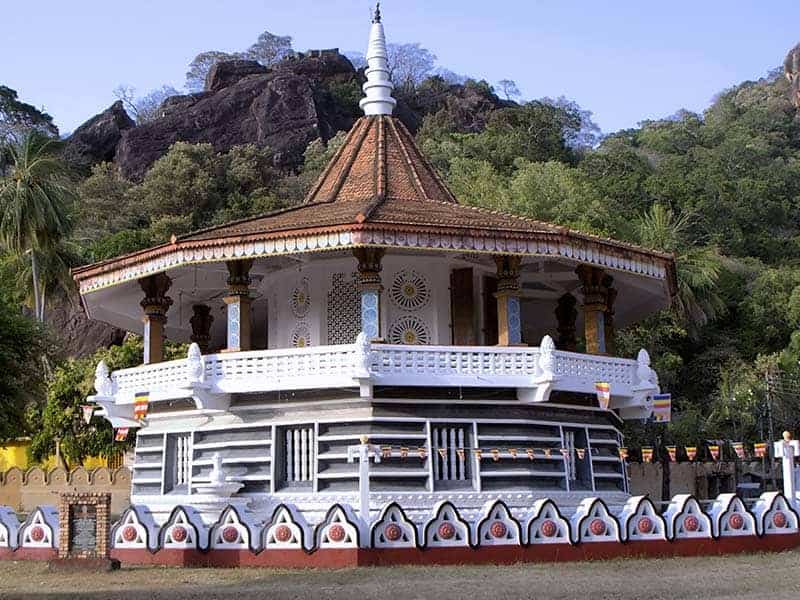Dimbulagala Vihara is an important historical site for the simple reason that it has functioned as a religious institute for millennia, most recently as Gunner’s Rock during the period of British colonization, a rock formation that works as an isolated mountain or inselberg at the end of a now-geologically fractured range. Dimbulagala Vihara is situated in the Polonnaruwa District and thus has been rather reachable from the two great capitals of the Rajarata Kingdom. Firstly the great rock of Dimbulagala was inhabited by the Vedda tribesmen, the aboriginal hunter-gatherers of the island; evidence of their ancient settlements in the caves here were first found in 1911 by anthropologist Charles Seligman. In fact, historically, it was also considered a kingdom of the Yaksha tribe, an indigenous tribe that is now genetically extinct.
The mountain was once known as Udumbara Giri, literally “Wood Apple Mountain”, or Dumbara, as well as being called Dola Pabbatha. It was once used by King Pandukabhaya of the earlier 4th and the later 3rd Centuries BC as a hiding place during his war with his uncles who attempted to kill him. Also, his wife Swarna Pali gave birth in one of the natural mountain caves. He had two sons, Mutasiva and Ganatissa. It was Mutasiva’s own son Devanampiya Tissa, who built among the earliest religious monuments at Dimbulagala Vihara. It was part of his great building spree, being the first Buddhist king of Sri Lanka. It was the abode of the then-spiritual leader of the country, the Arahat Mahinda.
The Arahats were the Buddhist clergymen and women who had reached the highest level of sainthood other than the Buddha himself. For thousands of years, many Arahats lived at this monastery, including the very last, the Venerable Maliyadeva. He lived during the Middle Ages, during the latter parts of the 13th Century AD.
Another venerated monk was Kuttha Gattha Tissa, a monk from the 1st Century BC who helped to pen down the Buddhist scriptures during a famous council in the Hill Country at Matale’s Aloka Lena. The king at the time was Valagamba and he lavished every imaginable comfort on the monks, reconstructing the monastery as a beautiful paradise. However much of the great Dimbulagala Vihara dates back to the Polonnaruwa Kingdom, the 12th Century AD but did not last long beyond this point. It was the heroic King Vijayabahu I who constructed a larger portion of this temple during the middle years of the 11th Century. He was the founder of the new kingdom, Later, Parakramabahu I of Polonnaruwa became an important and powerful patron of the temple and the monastery. Even monks from Myanmar lived in the monastery and its hinterland, the famous Namal Pokuna. This was also a monastic complex a few miles away from the rock temple, situated among a collection of natural pools on the rock. There was a full-sized monastery here, with a stupa, shrine for the Bo tree, and other facets of the traditional monastery. Much later, the Medieval ruler Parakramabahu II was also an important patron of the temple and the island’s spiritual head was a monk resident at the monastery, the famed Dimbulagala Maha Kashyapa. Yet after the king’s reign, the monastery suffered a few setbacks and it was swallowed up by jungles and scrubland. At present there is a large and colorful building that functions as a knockoff, or a reminder of what once transpired here. It is a construction from the 1950s. built under the guidance of Venerable Kithalagama Sri Seelankara.
Written by Vasika Udurawane for Travel Lanka Compass



0 Comment